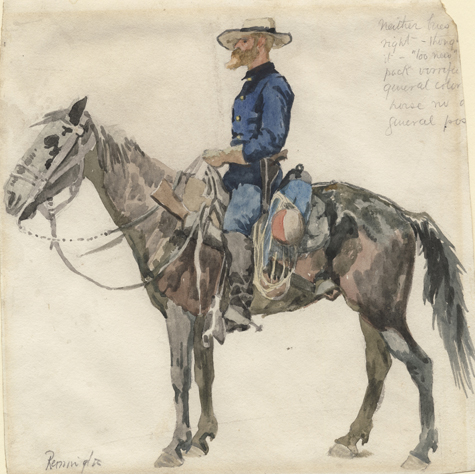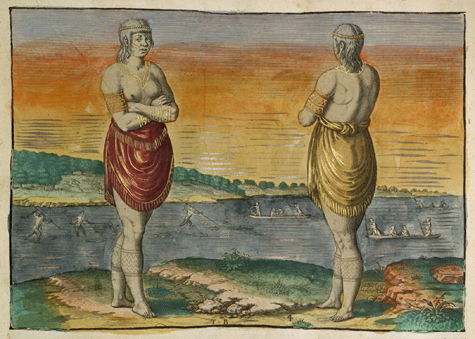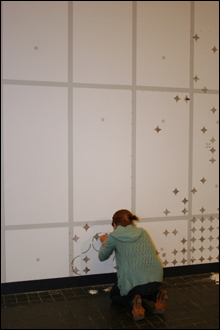
ROUGH RIDER Frederick Remington's "U.S. cavalry trooper in campaign dress" (c. 1890).
|
Visiting “Pictures from the Hay” is like rummaging through your grandparents’ attic . . . if your grandparents are amazingly curious, incredibly well-connected, and fabulously well-to-do.
The show at Brown’s David Winton Bell Gallery (64 College Street, Providence, through October 31) celebrates the 100th anniversary of Brown’s John Hay Library by digging out of the institution’s special collections a 4000-year-old Sumerian clay tablet, a 2000-year-old papyrus Egyptian Book of the Dead, a pop-up book Lulu Hansen made in Walter Feldman’s “Art of the Book” class at Brown in 1999, and numerous other astonishing treasures.
John Hay, class of 1858, served as President Abraham Lincoln’s private secretary during the Civil War and later became secretary of state. After his death in 1905, the Prospect Street library was built in his honor at the request — and funding — of his pal, steel magnate Andrew Carnegie. Its special collections are mainly the province of determined scholars, except for exhibits at the library. So the 14 curators from the library and Bell Gallery have assembled a rare treat.

THE NEW WORLD Theodor de Bry's "Americae tertia pars memorabile provinciae Brasilae historiam" (1592). |
The show includes three 16th-century books that shattered ideas that had dominated European thought since Roman times — Leonhart Fuchs’s 1542 Notable commentaries on the history of plants; Nicholas Copernicus’s 1543 On the revolution of the celestial spheres, with a diagram for the first time putting the son at the center of the solar system; and Andrew Vesalius’s 1543 On the fabric of the human body, which revolutionized the study of anatomy. Nearby is a copy of Galileo’s 1610 book The Starry Messenger, which may include margin notes by Galileo himself.

ARTIST AT WORK Owen installing 'Divisibility.' |
Flemish engraver Theodor de Bry’s illustrated 1590s books recount early European adventures in the Americas, which, curators explain, “provided the European public with its first images of inhabitants of the New World.” One spread shows a cannibal tribe in what’s now Brazil pounding a stick up a captive’s ass.Patriots will also appreciate Paul Revere’s iconic, hand-colored 1770 engraving of the Boston Massacre and a massive scrapbook by 19th-century newspaper cartoonist Thomas Nast, who invented the Republican elephant and Democratic donkey and pioneered the plump version of Santa Claus. Nast pasted in reference photos of soldiers, newspaper clippings, and his own acid caricature of Confederate President Jefferson Davis.
A graying John Hay makes an appearance in an okay 1903 portrait by John Singer Sargent. More striking is the fawning letter Hay sent to Walt Whitman, thanking him for a copy of his poem “O Captain! My Captain!” that, at Hay’s request, Whitman had written out by hand. That poem sits in the case beside the letter. It arrives uncannily fresh, like Doc’s telegram from the past in the film Back to the Future II, as if Whitman has just dashed it out to us. Over and over a sense of direct contact with our ancestors electrifies the room.